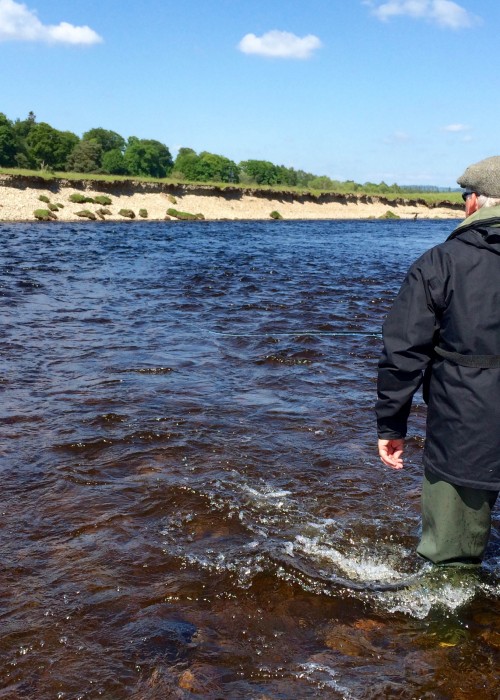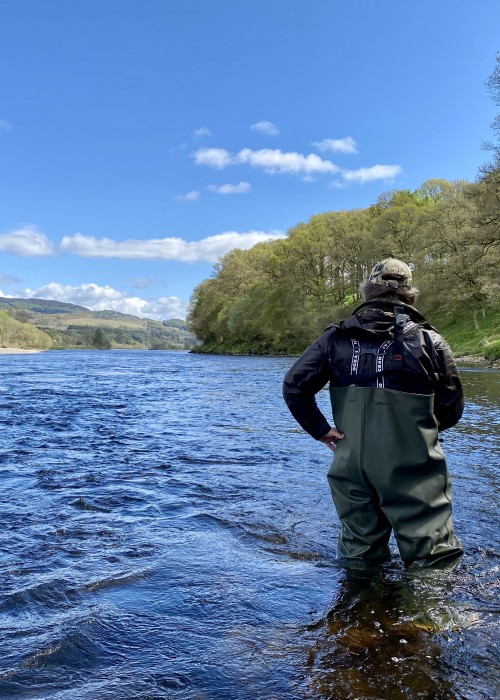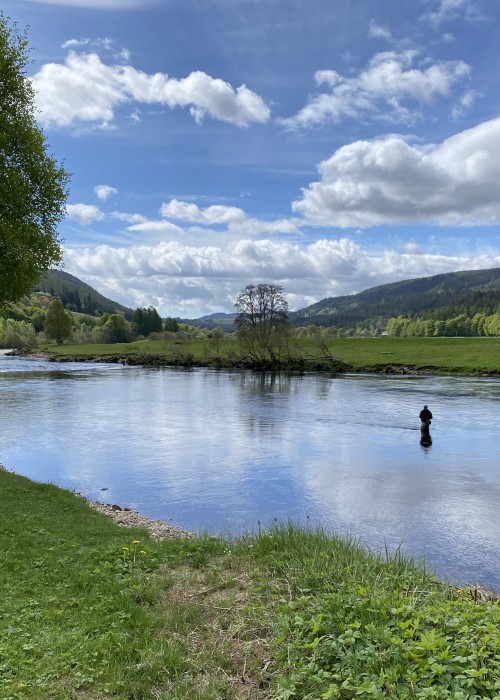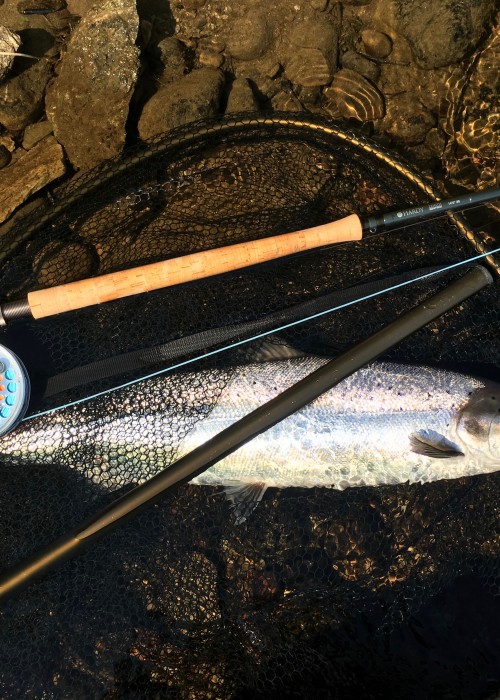





It's very important when you're salmon fishing on a Scottish river to deploy effective riverbank movement spacings between each cast.
One of the most important salmon fishing skills that is not taught or even fully understood by the vast majority of salmon fishers is 'effective riverbank movement'. Many anglers inch their way through a salmon pool wasting much valuable fishing time and technically training salmon to accept the presence of their fly (or lure) in the stream. To make a salmon take you need to trigger its hunting instinct and that is logically best done by startling the fish via good riverbank cast spacings. 1 yard (3 feet) between each swing of the fly has worked very well for me, my guests and fellow salmon fishing guide team members over the decades (when spin fishing a 10ft spacing between each cast is an equally effective movement strategy). Book a professional Scottish salmon fishing guide to learn this vital skill and many others for consistent success in this sport.
In order to become an absolute precision salmon fly or spin fishing water coverage expert (who will manufacture their own salmon fishing luck) you really should develop what I'm about to divulge into your riverbank movement technique. When you're fishing the fly your objective should be to seperate each swing of the fly by approx 3 feet. On most salmon fly rods there's 3 feet between their rod's butt ring and the end of the rod butt's cork handle. My teaching method advises all salmon fly fishers to visually pinpoint a riverbed feature directly underneath the butt ring on their rod and once the next cast has been made then simply move to that riverbed feature! With a spinning rod 10ft movement between each cast is a fantastic measure which will give you colossal water coverage over the full course of the fishing day. Most spinning rods that are used on the Tay where spinning is permitted are 10ft in length so there you have the exact measure in your hands. If you want precision with a spinning rod at the end of each cast swing the rod tip into the riverbank below you and move to that exact spot before recasting. Just remember that the more effective water coverage you depoly in salmon fishing the better your chances of success.
On the River Tay a form of 'backing up' downstream trawling referred to as 'harling' is deployed to cover the generally wider & deeper Tay. With this Tay boat fishing method typically 3 lures or flies are tactfully presented at varying lengths over the salmon lies which almost creates complete 100% watercoverage over just about every square yard of water if the boat is under the control of a skilled and experienced Tay boatman. Harling lures don't leave the water between casts either adding even more effective lure swim time to the fishing day. This really also boils down to effective watercoverage if you really think about it and as mentioned above this can be replicated by a riverbank fisher who's deploying good methodical and consistent fly swing spacings between each cast.